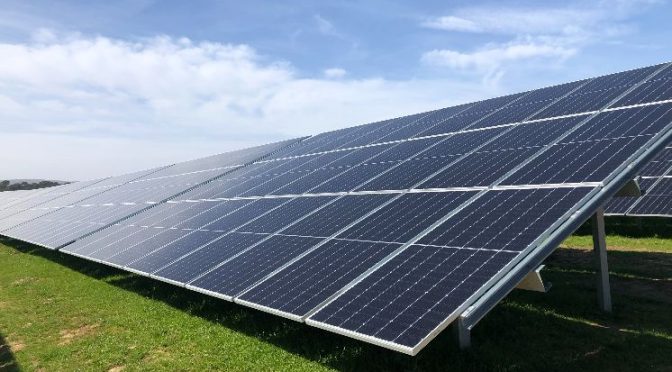Solar energy (photovoltaic and solar thermal) is now the second source with the highest capacity (27,853 MW), only behind wind (30,810 MW), according to a report by opina360.
This Tuesday the first report of the Renewable Energy Observatory for the digital economy prepared by Opina 360 for Foro Sella was released, which analyzes the evolution of renewable sources in the electrical system in 2023.
Held in November 2023, Foro Sella was defined as “a space for reflection and debate focused on key issues of economic and social development such as energy, the environment, innovation and, in general, the objectives defined in the 17 SDGs of The United Nations”. The report shared today was carried out by Opina360, which is defined as “the social research institute for the clients of the Redondo Group”, created by Iván Redondo, former Chief of Staff of the Presidency of the Government together with his wife, Sandra Rudy, according to El Confidential.
The report includes a territorial analysis with detailed data for each of the autonomous communities. On the installed power side, the system’s generation capacity increased by 6,253 MW, 5.2% more than the previous year, reaching 125,620 MW. Of them, 6,261 MW were renewable, the largest increase in the last four years. In turn, practically nine out of every ten new megawatts of power corresponded to solar photovoltaic, which registered its greatest growth of the series by adding 5,594 MW in a single year. The rest of the renewable increase was concentrated almost exclusively in wind, with 661 MW more (2.2%).
At the end of the year, renewable sources had 77,039 MW of installed power, which represents 61.3% of the total national electricity system, after advancing more than eleven points in just four years. Solar energy (photovoltaic and thermal) is now the second source with the highest capacity (27,853 MW), only behind wind (30,810 MW), and together they account for almost half of the national generation park (46.7% ).
Castilla-La Mancha has installed 2,024 MW of photovoltaics (49.2% more); Andalusia, 1,170 MW (+27.8%); Extremadura, 1,064 MW (+19.9%); Aragon, 551 MW (+29.7%); Castilla y León, 454 MW (+31.2%); Murcia, 162 MW (+11.5%); Balearic Islands, 104 MW (+45.3%), and the rest of Spain, only 65 MW (+4.8%).
From the point of view of electricity generation, 2023 was also a record year for renewable energies: 134,315 GWh were injected into the system, 15.1% more than the previous year and 37.2% more than in 2019. The sources that most drove this growth were solar photovoltaic, whose deployment allowed it to advance by 33.8% and set a new maximum (37,328 GWh), and hydroelectric power, which rose by 41.1% thanks to the recovery of the rains in various areas of the peninsula. Solar thermal also added 13.9%. Wind energy registered an increase of only 2.2%, but it helped it break its record (62,569 GWh) and regain first place among generation sources.
The decrease in generation has to do with lower national demand, which fell by 2.3%, to 244,659 GWh. It is reduced for the second consecutive year and is at the lowest level since 2004. In the last two years, a clear divergence has been observed between the growing economic activity and the lower demand for electricity from the grid, which is justified above all by the strong impulse of the self-consumption, both in the productive sectors and in homes. At the current level, national renewable generation makes it possible to cover 54.9% of the demand of the electrical system.


